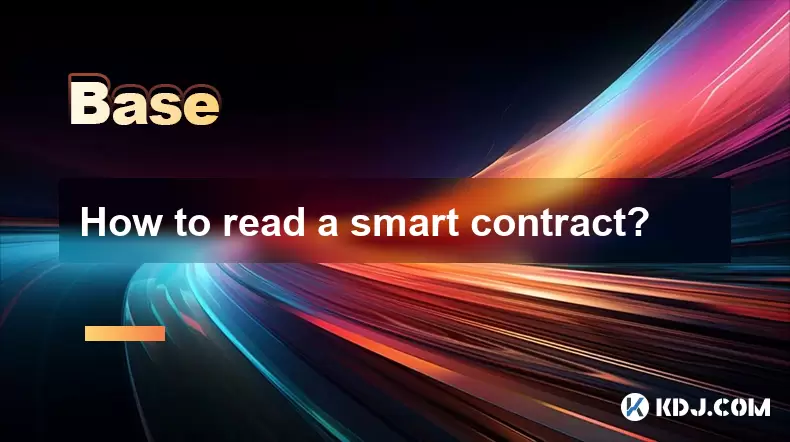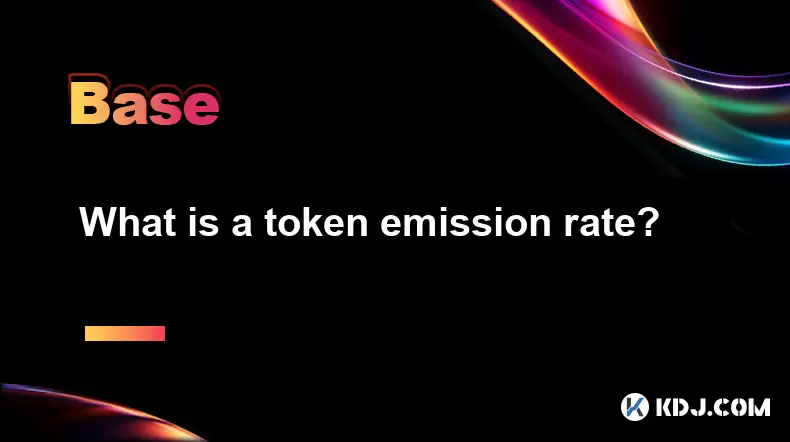-
 Bitcoin
Bitcoin $108,708.8110
0.60% -
 Ethereum
Ethereum $2,561.6057
1.91% -
 Tether USDt
Tether USDt $1.0001
-0.03% -
 XRP
XRP $2.2795
0.57% -
 BNB
BNB $662.2393
1.00% -
 Solana
Solana $153.1346
3.74% -
 USDC
USDC $1.0000
0.00% -
 TRON
TRON $0.2877
0.97% -
 Dogecoin
Dogecoin $0.1710
3.93% -
 Cardano
Cardano $0.5871
1.61% -
 Hyperliquid
Hyperliquid $39.6663
1.68% -
 Sui
Sui $2.9032
0.79% -
 Bitcoin Cash
Bitcoin Cash $496.1879
1.71% -
 Chainlink
Chainlink $13.5807
3.01% -
 UNUS SED LEO
UNUS SED LEO $9.0777
0.61% -
 Stellar
Stellar $0.2514
4.51% -
 Avalanche
Avalanche $18.1761
1.86% -
 Shiba Inu
Shiba Inu $0.0...01173
1.72% -
 Toncoin
Toncoin $2.8010
-4.23% -
 Hedera
Hedera $0.1594
3.21% -
 Litecoin
Litecoin $87.0257
-0.53% -
 Monero
Monero $319.1217
1.79% -
 Polkadot
Polkadot $3.3853
0.68% -
 Dai
Dai $0.9999
-0.01% -
 Ethena USDe
Ethena USDe $1.0003
0.02% -
 Bitget Token
Bitget Token $4.3420
-0.97% -
 Uniswap
Uniswap $7.3772
1.39% -
 Aave
Aave $286.6277
5.61% -
 Pepe
Pepe $0.0...09994
2.33% -
 Pi
Pi $0.4589
1.76%
How to read a smart contract?
Smart contracts are self-executing agreements written in code, often on Ethereum, automating transactions without intermediaries.
Jul 07, 2025 at 05:00 pm

Understanding the Basics of Smart Contracts
A smart contract is a self-executing contract with the terms of the agreement directly written into lines of code. These contracts run on blockchain platforms, most commonly Ethereum, and are used to automate transactions and agreements without intermediaries. To read a smart contract effectively, you must first understand its basic structure and purpose.
Smart contracts are typically written in programming languages like Solidity, which is the most popular for Ethereum-based contracts. Before diving into the code, it's essential to grasp what kind of function the contract serves—whether it’s for token transfers, decentralized finance (DeFi), or non-fungible tokens (NFTs). Each type has unique characteristics that influence how the contract should be interpreted.
Setting Up the Right Tools
To begin reading a smart contract, you'll need specific tools and environments. One of the most accessible platforms is Remix IDE, an open-source tool that allows you to compile and debug Solidity code. Another useful resource is Etherscan, where many deployed contracts are publicly viewable.
Before proceeding, ensure you have:
- A browser with access to Remix or similar IDE
- An Ethereum wallet address or contract address from Etherscan
- A basic understanding of programming logic
Once these prerequisites are met, you can retrieve the source code from Etherscan by searching for the contract address and navigating to the "Contract" tab. This step allows you to see the actual Solidity code behind a deployed contract.
Deciphering the Structure of a Smart Contract
Smart contracts follow a structured layout that includes several key components:
- Pragma directives: These specify the version of Solidity used.
- Imports: External libraries or other contracts that this contract uses.
- Contract definition: The main body of the contract.
- State variables: Variables stored permanently in the contract storage.
- Functions: Executable code that performs actions when called.
Each section plays a role in how the contract behaves. For example, state variables define the data the contract holds, while functions dictate what users or other contracts can do with it. Understanding how these parts interact is crucial to reading a smart contract effectively.
Analyzing Functions and Their Purpose
The heart of any smart contract lies in its functions. These can be either view, pure, payable, or regular functions that modify state. When reading a contract, pay attention to:
- What each function does
- Whether it modifies state or simply reads data
- If it accepts Ether or interacts with other contracts
For instance, a payable function might allow users to send ETH to the contract, while a view function could retrieve balances or user data without changing anything on the blockchain. Reading through function names and their associated comments (if present) can provide insight into their intended use.
One common function is transfer(address to, uint amount), which moves tokens between addresses. Analyzing such functions helps determine if they contain reentrancy vulnerabilities, overflow risks, or unauthorized access controls.
Checking for Security Patterns and Red Flags
Security is paramount when reviewing smart contracts. Even small oversights can lead to significant losses. Some red flags to look for include:
- Use of outdated compiler versions
- Absence of modifier checks in sensitive functions
- Direct use of
callordelegatecallwithout proper validation - Lack of ownership controls
Tools like Slither and Securify can help analyze contracts for known vulnerabilities. Additionally, experienced developers often follow best practices such as using OpenZeppelin libraries for common functionalities like token standards (ERC-20, ERC-721).
Always verify whether the contract has been audited by reputable firms. Public audit reports are usually available on GitHub or the project's official website.
Interpreting Events and Logging Mechanisms
Smart contracts emit events to log important actions on the blockchain. These events help track changes and are critical for front-end applications to respond accordingly. When reading a contract, locate the event definitions and match them with corresponding emit statements inside functions.
For example, a token transfer may trigger an event like:
event Transfer(address indexed from, address indexed to, uint value);This event logs every time tokens move between addresses. Understanding how and when events are triggered provides transparency into contract behavior and aids in debugging issues.
Frequently Asked Questions
Q: Can I read a smart contract without knowing Solidity?
While some high-level understanding is possible through tools like Etherscan's ABI decoder or explorers with human-readable interfaces, having a foundational knowledge of Solidity is highly recommended for accurate interpretation.
Q: Are all smart contracts public on the blockchain?
Most smart contracts on public blockchains like Ethereum are indeed public. However, some may be deployed without source code verification, making them harder to interpret without decompilation tools.
Q: How do I know if a contract is malicious just by reading it?
Identifying malicious intent requires experience and familiarity with common attack vectors. Look for unusual patterns like unchecked external calls, hardcoded addresses, or excessive permissions granted to owners.
Q: Is it safe to interact with a contract I haven’t reviewed?
It's generally risky to interact with unverified contracts. Always review the source code or rely on trusted audits before sending funds or granting permissions.
Disclaimer:info@kdj.com
The information provided is not trading advice. kdj.com does not assume any responsibility for any investments made based on the information provided in this article. Cryptocurrencies are highly volatile and it is highly recommended that you invest with caution after thorough research!
If you believe that the content used on this website infringes your copyright, please contact us immediately (info@kdj.com) and we will delete it promptly.
- Bitcoin Mempool at Historical Lows: Trouble on the Horizon?
- 2025-07-07 21:10:12
- CleanSpark Dominates Bitcoin Mining: 50 EH/s and Beyond
- 2025-07-07 21:50:12
- BitFuFu's Bitcoin Mining Momentum: Hashrate Expansion and Market Dynamics in 2025
- 2025-07-07 21:15:12
- Pi Network's Studio Upgrade: Building the Web3 App Store, One Pioneer at a Time
- 2025-07-07 21:50:12
- Jorhat's Jora Villa: A Coin-Curated Chronicle of Assam's History and Heritage
- 2025-07-07 21:55:12
- Dubai's Cashless Conquest: How Know-How Fuels the Future
- 2025-07-07 21:55:12
Related knowledge

What is a user-generated content (UGC) NFT platform?
Jul 04,2025 at 01:49pm
Understanding the Concept of a UGC NFT PlatformA user-generated content (UGC) NFT platform is a digital marketplace or ecosystem where users can create, mint, and trade non-fungible tokens (NFTs) that represent ownership of original digital content they produce. Unlike traditional NFT platforms where creators often include professional artists or develo...

What is composability in DeFi?
Jul 06,2025 at 04:07pm
Understanding the Concept of Composability in DeFiComposability in DeFi refers to the ability of decentralized finance protocols and smart contracts to interact seamlessly with one another, much like building blocks that can be combined in various ways to create new financial products and services. This concept is a core innovation within the DeFi ecosy...

What is a "crypto primitive"?
Jul 05,2025 at 10:14pm
Defining the Concept of a Crypto PrimitiveIn the context of blockchain and cryptocurrency, a crypto primitive refers to a fundamental building block or foundational element used in constructing decentralized systems and cryptographic protocols. These primitives are essential for enabling secure transactions, consensus mechanisms, and smart contract exec...

What is a fair launch?
Jul 05,2025 at 07:31pm
Understanding the Concept of a Fair LaunchA fair launch refers to the release of a cryptocurrency or blockchain project in a manner that ensures equal opportunity for all participants. Unlike traditional token launches, which may involve private sales, venture capital funding, or pre-mining, a fair launch emphasizes transparency and decentralization. In...

What is a token emission rate?
Jul 07,2025 at 02:51am
Understanding the Basics of Token Emission RateIn the realm of cryptocurrencies, token emission rate refers to the speed or frequency at which new tokens are generated and released into circulation within a blockchain network. This concept is fundamental in understanding how certain blockchain ecosystems manage inflation, incentivize participants, and m...

What is a cliff in tokenomics?
Jul 05,2025 at 07:18pm
Understanding the Concept of a Cliff in TokenomicsIn the world of cryptocurrency and blockchain, tokenomics plays a pivotal role in shaping the economic behavior of a digital asset. One of the key mechanisms used to manage token distribution is known as a cliff. This concept is commonly applied in projects that include vesting schedules for tokens, espe...

What is a user-generated content (UGC) NFT platform?
Jul 04,2025 at 01:49pm
Understanding the Concept of a UGC NFT PlatformA user-generated content (UGC) NFT platform is a digital marketplace or ecosystem where users can create, mint, and trade non-fungible tokens (NFTs) that represent ownership of original digital content they produce. Unlike traditional NFT platforms where creators often include professional artists or develo...

What is composability in DeFi?
Jul 06,2025 at 04:07pm
Understanding the Concept of Composability in DeFiComposability in DeFi refers to the ability of decentralized finance protocols and smart contracts to interact seamlessly with one another, much like building blocks that can be combined in various ways to create new financial products and services. This concept is a core innovation within the DeFi ecosy...

What is a "crypto primitive"?
Jul 05,2025 at 10:14pm
Defining the Concept of a Crypto PrimitiveIn the context of blockchain and cryptocurrency, a crypto primitive refers to a fundamental building block or foundational element used in constructing decentralized systems and cryptographic protocols. These primitives are essential for enabling secure transactions, consensus mechanisms, and smart contract exec...

What is a fair launch?
Jul 05,2025 at 07:31pm
Understanding the Concept of a Fair LaunchA fair launch refers to the release of a cryptocurrency or blockchain project in a manner that ensures equal opportunity for all participants. Unlike traditional token launches, which may involve private sales, venture capital funding, or pre-mining, a fair launch emphasizes transparency and decentralization. In...

What is a token emission rate?
Jul 07,2025 at 02:51am
Understanding the Basics of Token Emission RateIn the realm of cryptocurrencies, token emission rate refers to the speed or frequency at which new tokens are generated and released into circulation within a blockchain network. This concept is fundamental in understanding how certain blockchain ecosystems manage inflation, incentivize participants, and m...

What is a cliff in tokenomics?
Jul 05,2025 at 07:18pm
Understanding the Concept of a Cliff in TokenomicsIn the world of cryptocurrency and blockchain, tokenomics plays a pivotal role in shaping the economic behavior of a digital asset. One of the key mechanisms used to manage token distribution is known as a cliff. This concept is commonly applied in projects that include vesting schedules for tokens, espe...
See all articles

























































































